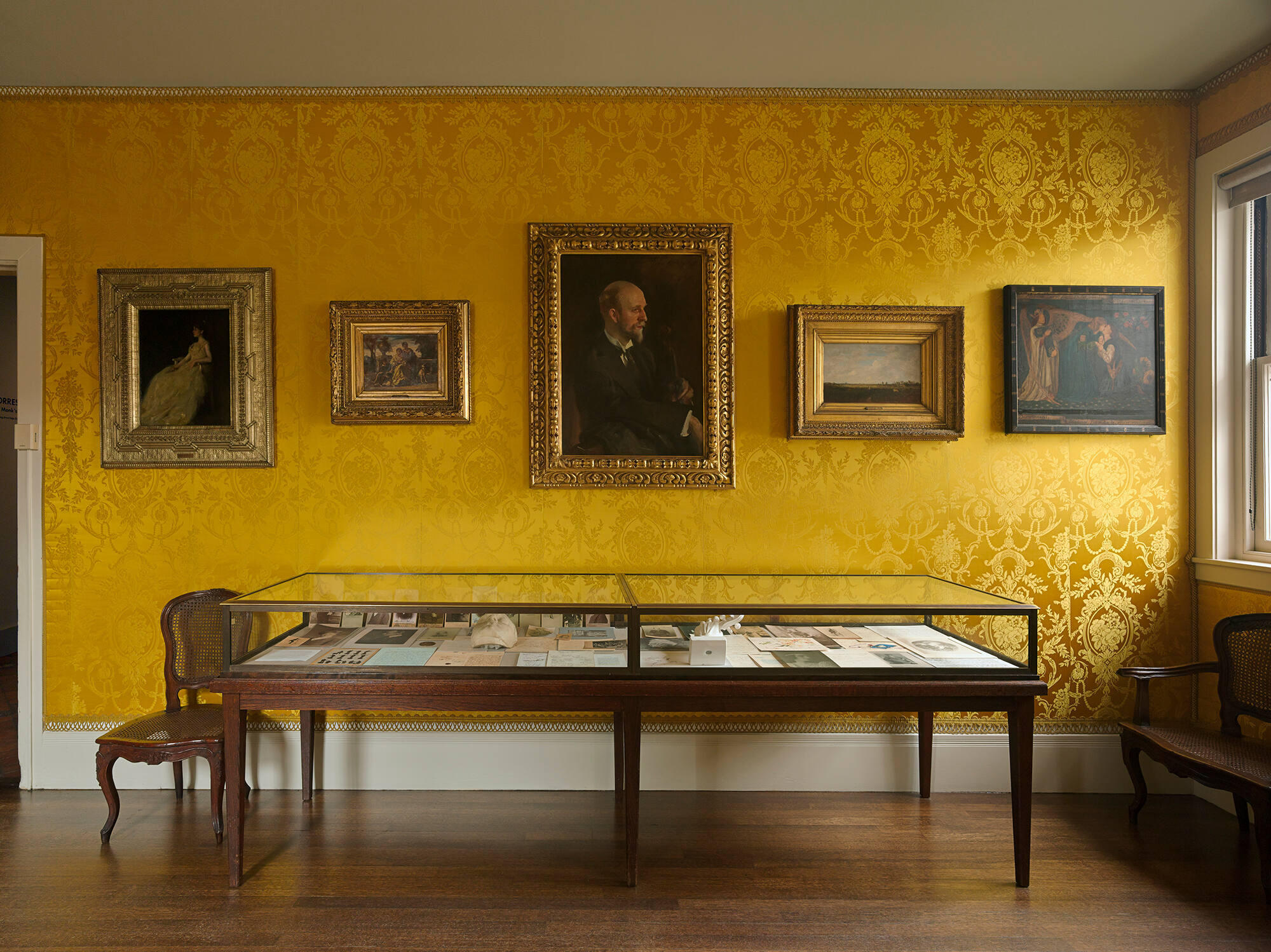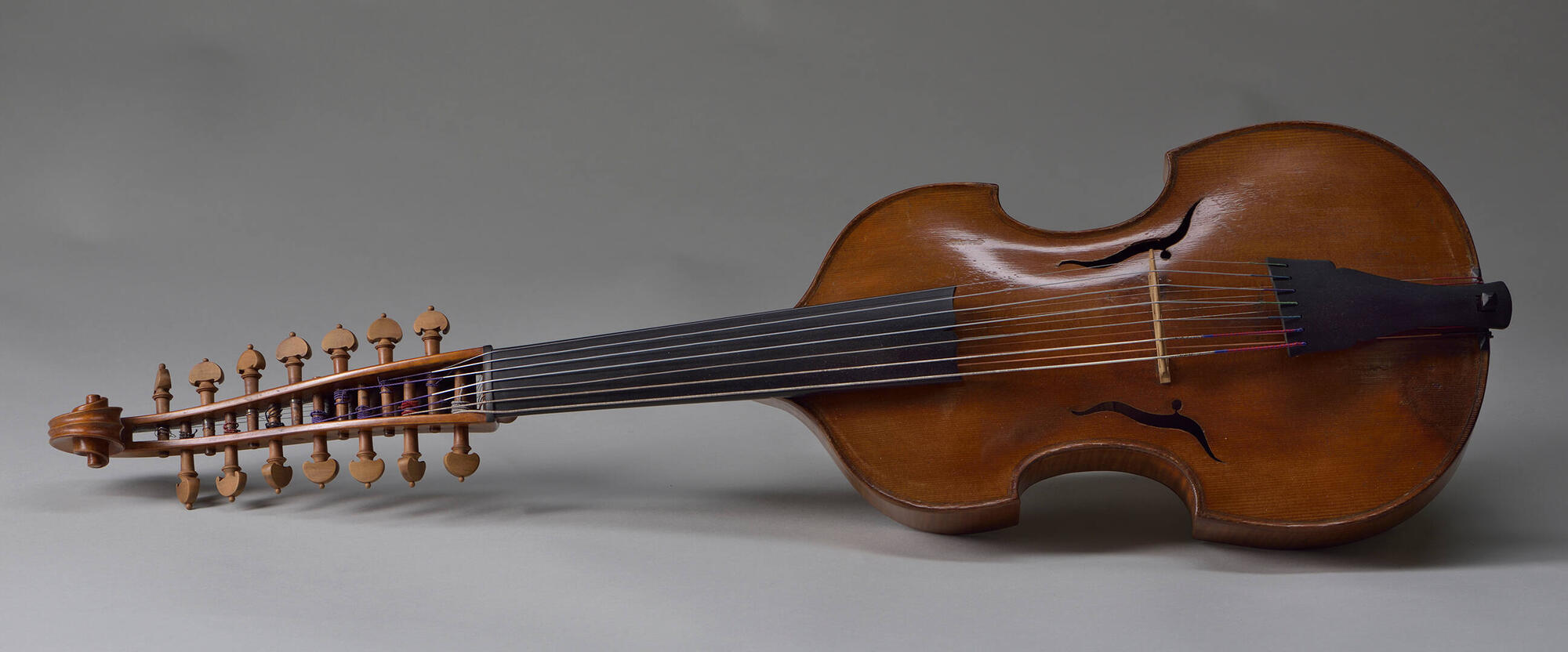Perhaps the musician dearest to Isabella Stewart Gardner was the violinist and composer Charles Martin Loeffler, her longtime friend.
Charles Martin Loeffler and Isabella Stewart Gardner
In the Yellow Room of the Museum, John Singer Sargent’s elegant portrait of Loeffler glows from the wall. This portrait was Sargent’s birthday gift to Isabella in 1903. He painted it in the Gothic Room of the Museum and gave it to her just a few weeks after the Museum opened.
Loeffler gave his own birthday gift for Isabella that year: the beautiful Eberle viola d’amore (made in the 1770s) that now sits in a case across from his Sargent portrait in the Yellow Room.
That very same April, Isabella made the best kind of gift one can give a composer: she hosted a concert of Loeffler’s music. It was only the second concert in the Museum’s Music Room—the first was at the Museum’s grand opening on January 1, 1903.
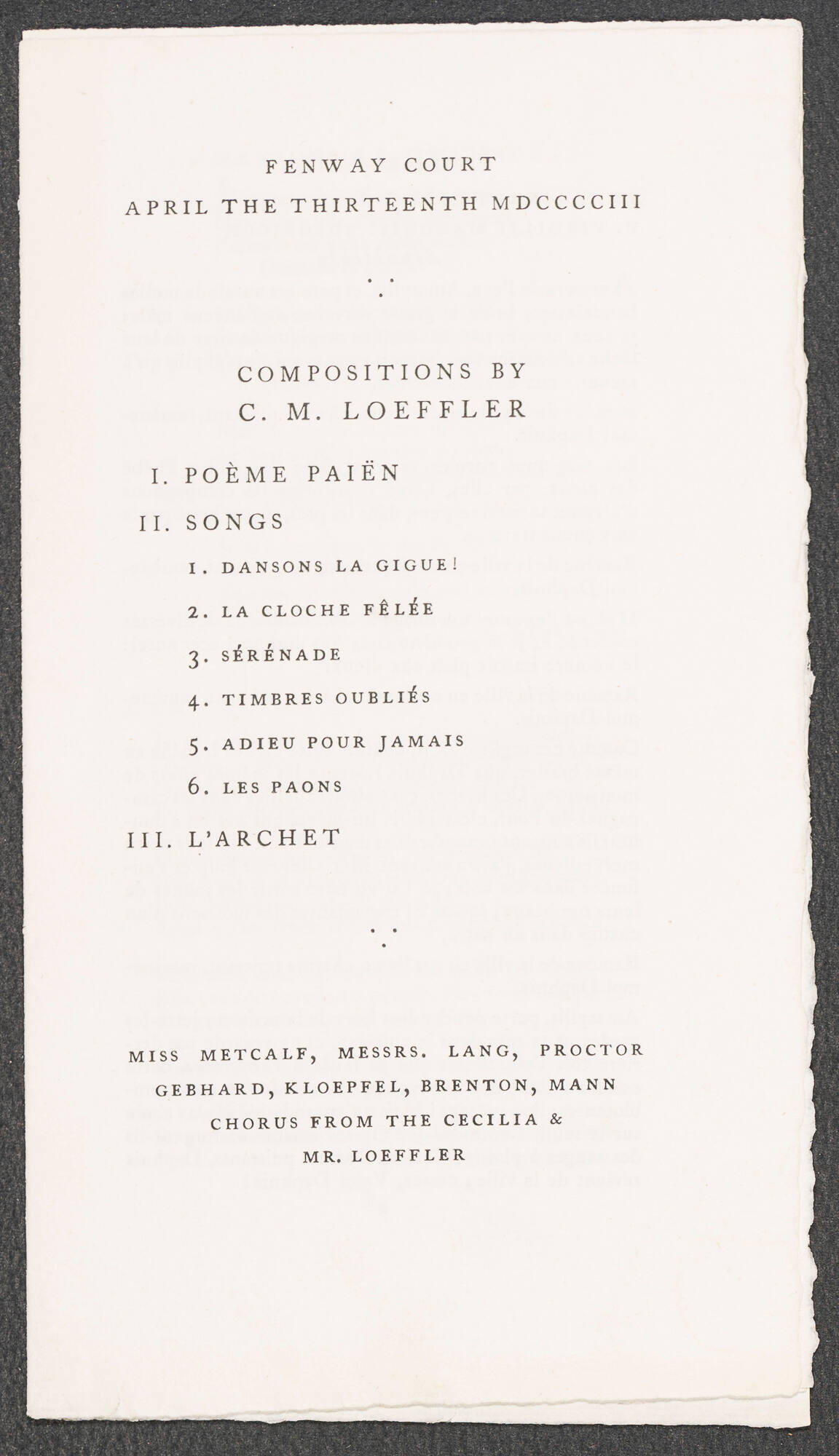
Isabella Stewart Gardner Museum, Boston (ARC.007772). Isabella displayed this program in the Musicians Case in the Yellow Room.
Concert Program,"Compositions by C. M. Loeffler," Fenway Court, 13 April 1903. Printed ink on paper
These objects and mementoes are evidence of Loeffler’s and Gardner’s friendship, but there is another example that is not in the Museum’s collection.
A Stradivarius
The musical instrument Loeffler loved most to play—and surely the one he holds in Sargent’s painting—was a glorious 1710 Stradivarius violin that Isabella bought in 1894 from W.E. Hill & Son in London. The Gardner Museum’s Archivist Shana McKenna has uncovered evidence that Loeffler himself was involved in the purchase. Arthur Hill, the proprietor of W. E. Hill, recorded in his diary for July 17, 1894 that:
Mr Loeffler called again today and brought with him a Mrs John L. Gardner, of Boston. I understand that she is very wealthy and a woman of fine taste. He had all our violins over at the rooms we have at 140 [New Bond Street], and they eventually decided that they liked the Strad we have, made in 1710.
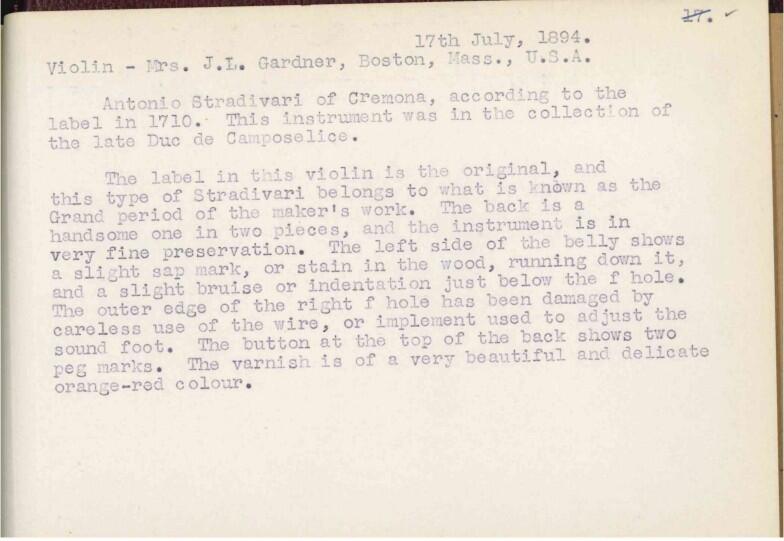
W.E. Hill & Sons (wehillandsons.com)
W.E. Hill & Sons (founded London, 1762), Certificate of Authenticity for the Stradivarius, “Camposelice” Violin, 17 July 1894, for Mrs. John L. [Isabella Stewart] Gardner
It seems Loeffler took a keen interest in this violin even before Isabella acquired it. After she bought it, he quickly became the musician to whom she loaned the instrument most frequently for performances.
I must give you an account of the Stradivarius’ behaviour on the fourth and fifth of January.... The instrument sounded most beautifully, the quality and brilliancy of the tone being praised by everybody.
Eventually, in 1918, she gave Loeffler the instrument outright: a princely gift indeed. Loeffler continued to perform on the instrument for another decade or so. Eventually, several years after Isabella’s death, he had stopped playing and sold the instrument to a dealer.
The violin’s name
Isabella's Stradivarius is one of a collection of instruments that are now called “Camposelice” after a colorful Dutch musician living in Paris named Nicolas Reubsaet (1843–1887). The son of a shoemaker, Reubasaet sought to improve his social standing, as musician and author Sylvia Kahan explains:
[He took] the audacious step of reinventing himself completely. And, thus, the freelance musician Nicolaas Reubsaet suddenly metamorphosed into Victor-Nicolas Reubsaet, son of a Lieutenant Colonel in the Austrian army and a Swedish countess, sole heir of an uncle whose convenient death conferred upon him the title of Vicomte d’Estenburgh de Bloemendaal.1
Reubasaet finally found his way into money and a genuine title after he married Isabella Eugénie Boyer—widow of the sewing machine magnate Isaac Singer. Suddenly wealthy, Reubasaet bought several rare instruments, including the Stradavarius Isabella would later buy. He also used his position (and perhaps made a financial gift) to achieve his quest for a “genuine” noble title. He persuaded King Umberto I of Italy to “restore to him” another invented title, that of “Duc de Camposelice.” At last, the soi-disant Vicomte had a title—paid for by the Singer sewing machine fortune. His ersatz title has been appended to several of the instruments he once owned, including Isabella’s Stradivarius.
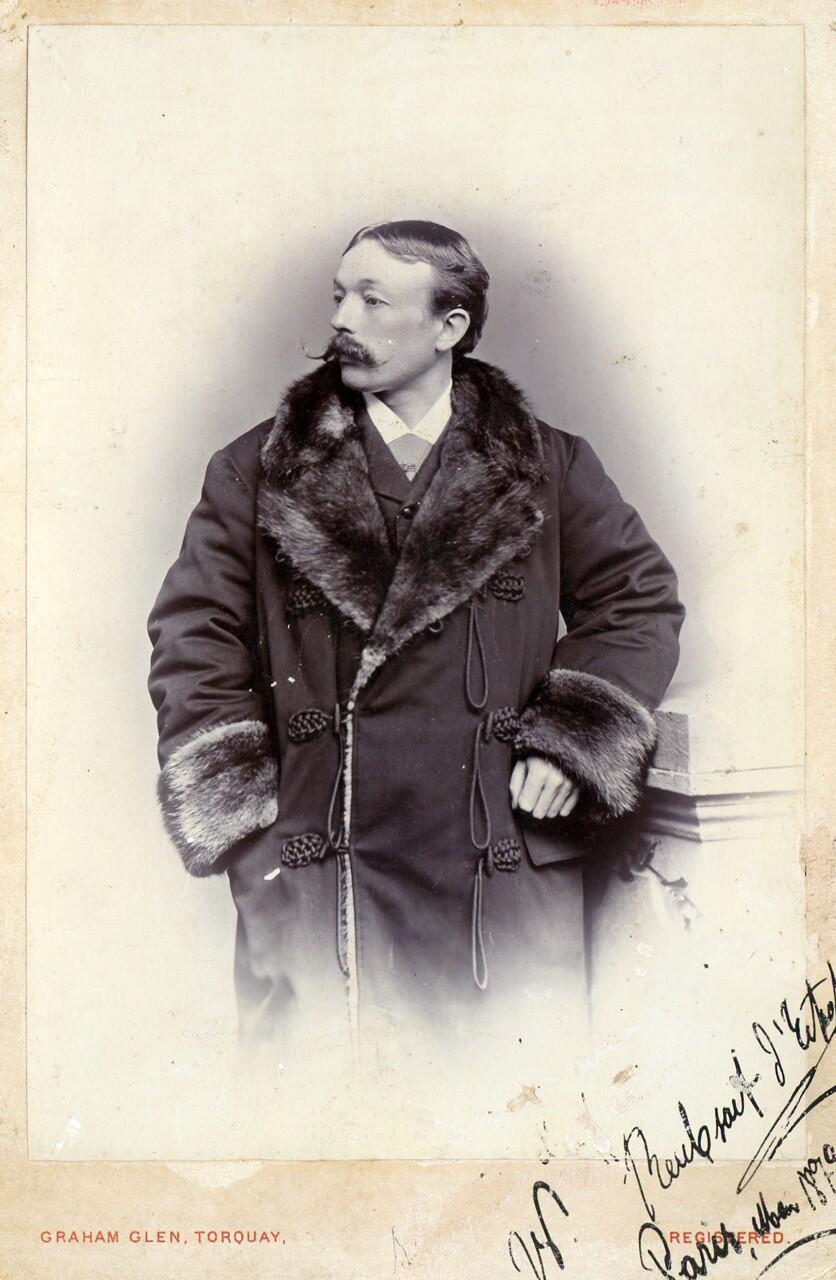
Photograph attributed to Henry Graham Glen. Courtesy of the RegioArchief Gemeente Sittard-Geleen, Netherlands. Collection 395-2 – Gemeente Sittard: fotocollectie.
Nicolas Reubsaet, Duc de Camposelice, 1879
Where is it now?
After passing through the hands of a number of performers, collectors, and dealers after Loeffler sold the violin—over a span of about 80 years—Isabella’s Stradivarius was acquired by the Nippon Foundation in Japan in 2004. The Foundation owns a collection of magnificent musical instruments, which it loans out to superb performers.
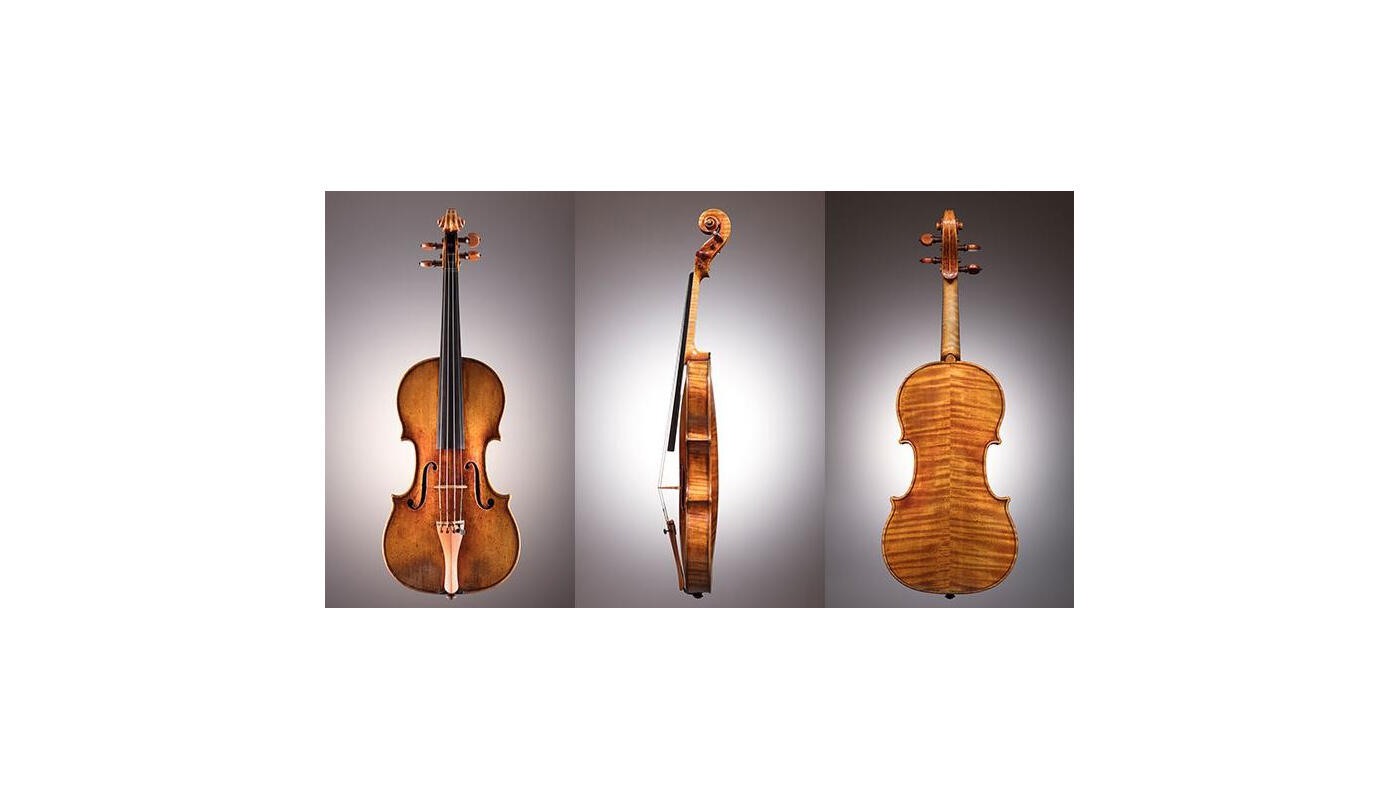
Nippon Foundation, Japan
Stradivarius, “Camposelice” Violin, 1710. The instrument once belonged to Isabella Stewart Gardner.
Since 2022, Isabella’s Stradivarius has been on loan to a spectacularly gifted young Spanish violinist, Maria Duñeas. At age 19, when she received word of the loan of the violin, Ms. Duñas posted a message on her social media: “Still over the moon about getting to explore this instrument and share its soul with you!” It is indeed an instrument with a lot of soul and a lot to explore.
I was able to go to hear Ms. Dueñas, now 21 and an international sensation. She performed on Isabella’s Stradivarius for the opening of the Philadelphia Orchestra season in September 2024. I can report that she is dazzling. I can report further that Isabella’s instrument is a wonder. The violins of the fabled maker Antonio Stradivari (about 1644–1737) offer a tremendous range of colors to a performer—especially one as gifted as Maria Dueñas. A great Stradivarius offers a great performer extraordinarily flexibility to move among its huge range of beautiful colors fleetly and deftly.
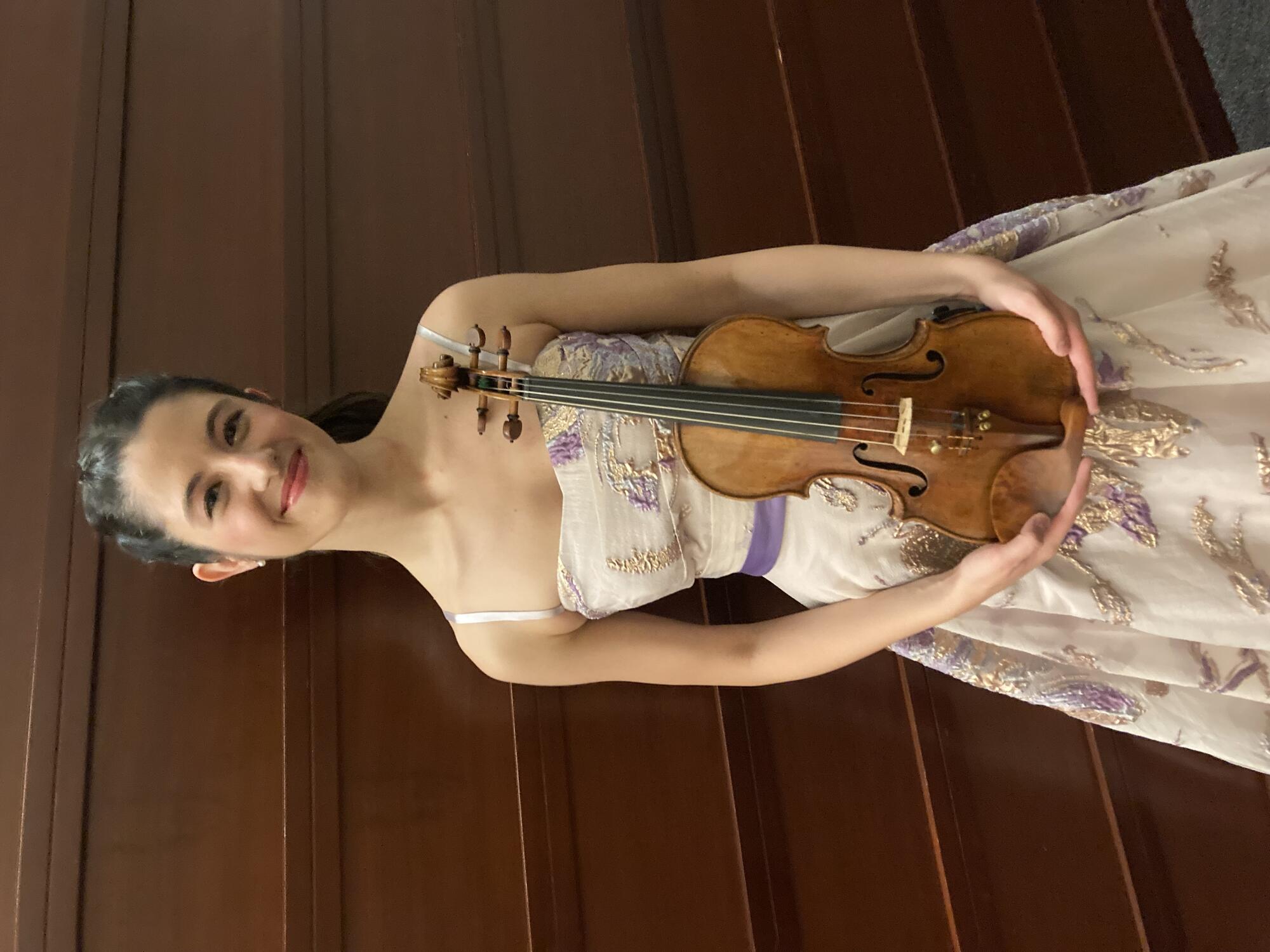
Maria Dueñas with the Stradivarius, “Camposelice” Violin, 1710. The instrument once belonged to Isabella Stewart Gardner.
In a performance of the slow movement of Beethoven’s Violin Concerto with the Vienna Philharmonic (available on YouTube), you can hear for yourself Dueñas’s jaw-dropping virtuosity and the glorious colors she draws out of Isabella’s Stradivarius. The range of sounds she conjures is amazing: high notes that sing with angelic purity or with the dramatic espressivo of an operatic soprano; low notes, chaste and solemn as chant, or throbbing and dark. Her profound interpretive gifts and astonishing technique spin all these colors into an incomparable dramatic monologue.
I was lucky enough to chat with Maestra Dueñas backstage after her triumph with the Philadelphia Orchestra. She generously shared her love for Isabella’s Stradivarius. I was fascinated to hear her explain that she has two instruments she performs on, and chooses the instrument to match the repertoire and the venue. For larger concerts (concertos, large concert halls) she most frequently chooses the Stradivarius: it is a major instrument for major performances. She certainly has a major impact when she performs on it.
What a joy that this extraordinary instrument continues to sing in the hands of such an immensely gifted performer. I am doing all I can to bring Ms. Dueñas to the Gardner Museum to perform. But in the meantime, it is a gift to be able to hear her enkindle so much beauty from Isabella’s violin.
A special thank you to W.E. Hill & Sons (wehillandsons.com) for their research assistance.
You May Also Like

Read More on the Blog
American Impressionism and a Piano Trio

Learn More
Music at the Gardner

Read More on the Blog
Belle of the Opera: Gardner and Wagner
Notes:
1Sylvia Kahan: Winnaretta Singer-Polignac - Princesse, mécène et musicienne (2018), (translation courtesy of the author)
Further Reading
Saldadze, Anna, ed. Antonio Stradivari : The Complete Works. Directed by Simon Morris and Steven Smith. London, UK: Beares Publishing, 2024. www.bearespublishing.com/stradivari
